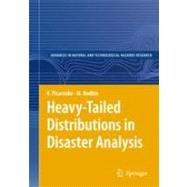
What is included with this book?
| Distributions of Characteristics of Natural Disasters: Data and Classification | p. 1 |
| The Problem of Parameterization and Classification of Disasters | p. 1 |
| Empirical Distributions of Physical Parameters of Natural Disasters | p. 4 |
| Distributions of Death Tolls and Losses Due to Disasters | p. 14 |
| The Classification and Parameterization of Disasters | p. 17 |
| The Main Results | p. 21 |
| Models for the Generation of Distributions of Different Types | p. 23 |
| Why Are the Characteristic Types of Distribution Prevalent? | p. 23 |
| The Multiplicative Model of Disasters | p. 33 |
| The Mixed Models | p. 34 |
| The Main Results | p. 36 |
| Nonparametric Methods in the Study of Distributions | p. 39 |
| Application to Earthquake Catalogs | p. 39 |
| Estimates of the Lower and Upper Bounds for the Tail of a Distribution Function | p. 41 |
| Confidence Intervals for the Intensity of a Poisson Process | p. 44 |
| Probability of Exceeding a Past Record in a Future Time Interval | p. 47 |
| Distribution of the time to the Nearest Event Exceeding the Past Maximum | p. 49 |
| Main Results | p. 52 |
| Nonlinear and Linear Growth of Cumulative Effects of Natural Disasters | p. 55 |
| Nonlinear Growth of Cumulative Effects in a Stationary Model with the Power (Pareto) Distribution | p. 55 |
| The Existence of a Nonlinear Growth of Cumulative Effects in a Stationary Model with the Pareto Distribution | p. 55 |
| The Evaluation of the Maximum Individual Loss | p. 57 |
| The Relation Between the Total Loss and the Maximum Individual Loss for the Pareto Law | p. 59 |
| The Growth of Total Earthquake Loss | p. 63 |
| The Raw Data on Seismic Disasters | p. 63 |
| The Nature of Nonlinear Growth of Cumulative Earthquake Loss | p. 66 |
| The Limits of Applicability of the Pareto Law to the Estimation of Earthquake Losses | p. 75 |
| Main Results | p. 82 |
| The Nonlinear and Linear Modes of Growth of the Cumulative Seismic Moment | p. 85 |
| Nonlinear Mode of Growth of Cumulative Seismic Moment | p. 85 |
| Change in the Rate at which the Cumulative Seismic Moment Increases with Time | p. 94 |
| Characteristic Maximum Earthquake: Definition and Properties | p. 97 |
| The Characteristic Maximum Earthquake: Estimation and Application | p. 102 |
| The Seismic Moment-Frequency Relation: Universal? | p. 107 |
| Nonlinear Mode of Growth of Cumulative Seismotectonic Deformation | p. 110 |
| Main Results | p. 112 |
| Estimating the Uppermost Tail of a Distribution | p. 115 |
| The Problem of Evaluation of the ôMaximum Possibleö Earthquake Mmax | p. 115 |
| Estimation of Quantiles Qq(¿) with the Help of Theorem 1 (Fitting the GEV Distribution) | p. 122 |
| Estimation of Quantiles Qq(¿) with the Help of Theorem 2 (Fitting the GPD Distribution) | p. 123 |
| Application of the GEV and GPD to the Estimation of Quantiles Qq(¿). The Global Harvard Catalog of Scalar Seismic Moments | p. 126 |
| Application of the GEV and GPD to the Estimation of Quantiles Qq(¿) for Catalogs of Binned Magnitudes | p. 134 |
| Catalog of the Japan Meteorological Agency (JMA) | p. 136 |
| Fennoscandia Catalog | p. 144 |
| Main Results | p. 152 |
| Application of the Kolmogorov Test to the Densities That Depending on a Parameter | p. 154 |
| Estimation of the Parameters (¿,¿, ¿) of the GEV Distribution Function: The Method of Moments (MM) | p. 155 |
| Estimation of Parameters (s,¿) of the GPD by Maximum Likelihood (ML) Method | p. 156 |
| Relationship Between Earthquake Losses and Social and Economic Situation | p. 159 |
| Variation in the Number of Casualties and Economic Loss from Natural Disasters | p. 159 |
| Dependence of Losses on Per Capita National Product Values | p. 165 |
| Damage Values and Social Cataclysms | p. 167 |
| The Natural Disasters and the Concept of Sustainable Development | p. 170 |
| Main Results | p. 171 |
| Summary and a Review | p. 173 |
| References | p. 181 |
| Index | p. 189 |
| Table of Contents provided by Ingram. All Rights Reserved. |
The New copy of this book will include any supplemental materials advertised. Please check the title of the book to determine if it should include any access cards, study guides, lab manuals, CDs, etc.
The Used, Rental and eBook copies of this book are not guaranteed to include any supplemental materials. Typically, only the book itself is included. This is true even if the title states it includes any access cards, study guides, lab manuals, CDs, etc.